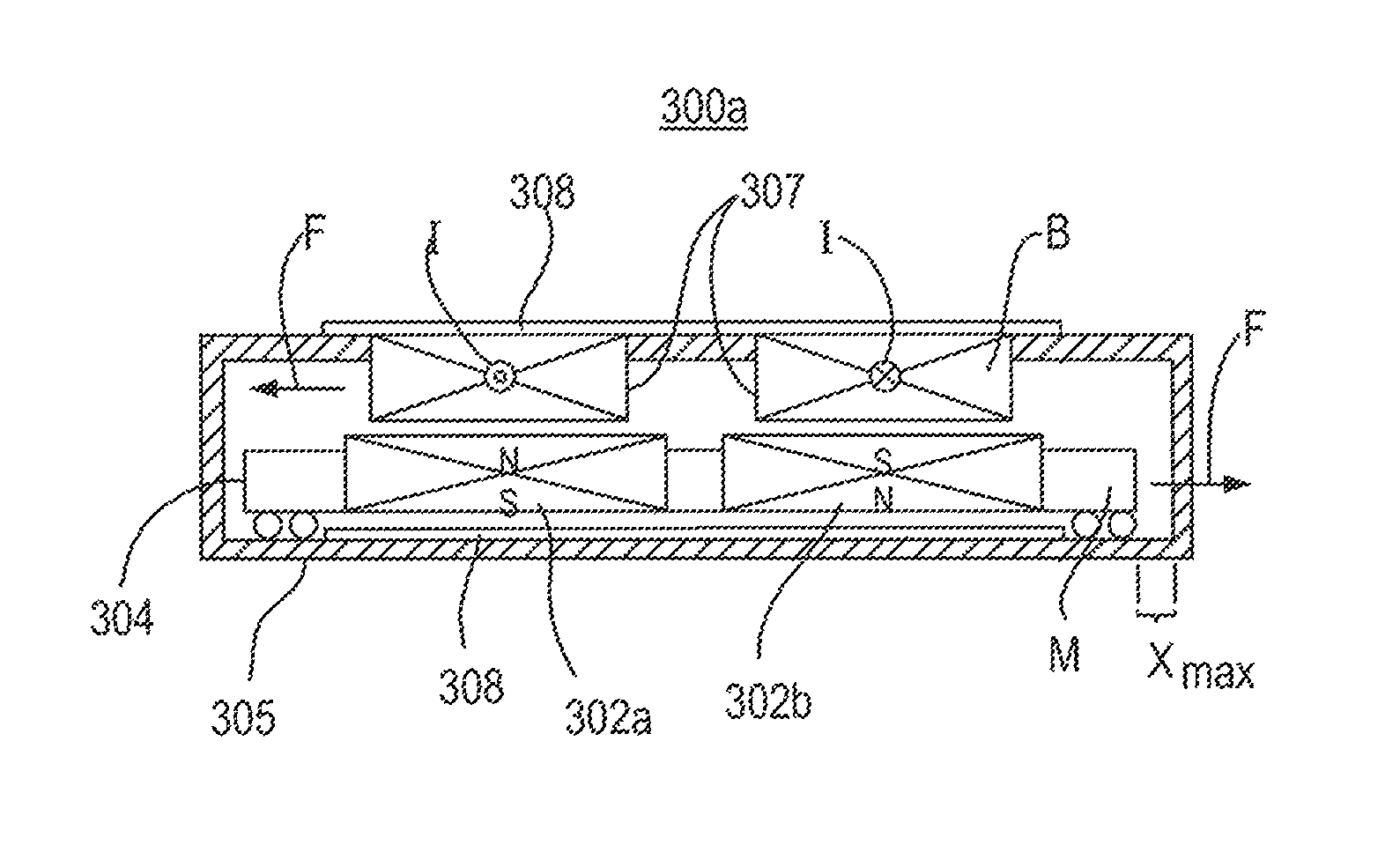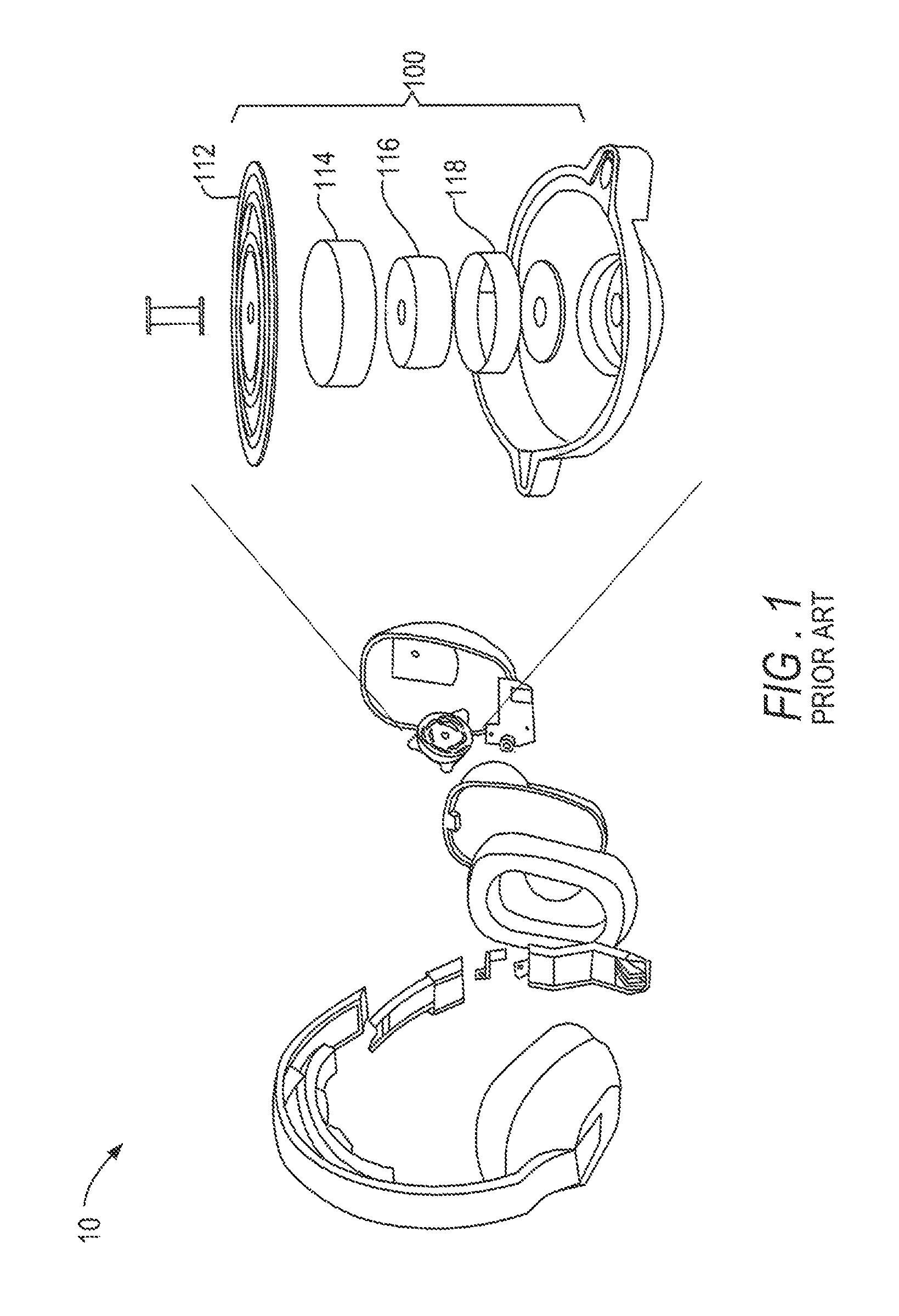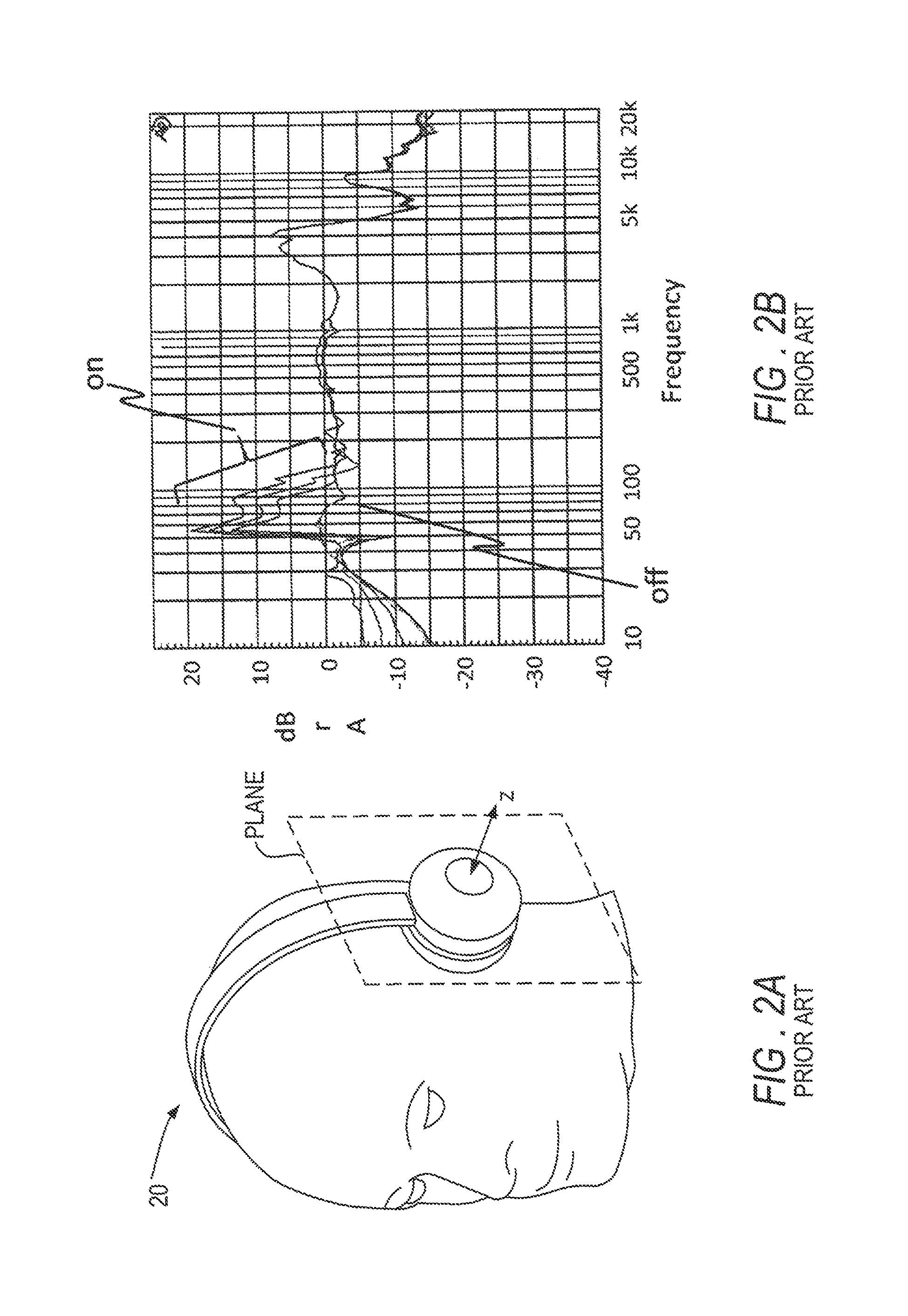Systems and methods for generating damped electromagnetically actuated planar motion for audio-frequency vibrations
a technology of electromagnetic actuation and planar motion, applied in the field of tactile transducers, can solve the problems of generating excess unwanted acoustic noise, overwhelming the output of the audio driver, and producing unwanted acoustic noise, etc., and achieve the effect of producing unwanted audio and/or distortion
- Summary
- Abstract
- Description
- Claims
- Application Information
AI Technical Summary
Benefits of technology
Problems solved by technology
Method used
Image
Examples
Embodiment Construction
[0064]Various embodiments for providing damped electromagnetically actuated planar motion for audio-frequency vibrations are disclosed herein. The force output across a frequency range of a tactile transducer used for this purpose is limited by the space available for moving the internal mass and the peak force of the actuator causing the movement. FIG. 3A shows chart 30 illustrating these two physical bounds on the force output of an electromagnetic vibration module arising from limitations on the space available for translating the mass and from the limited force output of the coil. For an electromagnetic actuator, these limits may be termed travel limit 31 and coil limit 32, respectively. If the system is not underdamped, the output of the transducer can be described by a curve in region 33, below these limits 31 and 32.
[0065]The travel limit obeys the equation:
Fmax=mxmax(2πf)2 (1)
where:[0066]Fmax=[N], maximum force[0067]xmax=[m], space in package available for displacement[0068...
PUM
 Login to View More
Login to View More Abstract
Description
Claims
Application Information
 Login to View More
Login to View More - R&D
- Intellectual Property
- Life Sciences
- Materials
- Tech Scout
- Unparalleled Data Quality
- Higher Quality Content
- 60% Fewer Hallucinations
Browse by: Latest US Patents, China's latest patents, Technical Efficacy Thesaurus, Application Domain, Technology Topic, Popular Technical Reports.
© 2025 PatSnap. All rights reserved.Legal|Privacy policy|Modern Slavery Act Transparency Statement|Sitemap|About US| Contact US: help@patsnap.com



